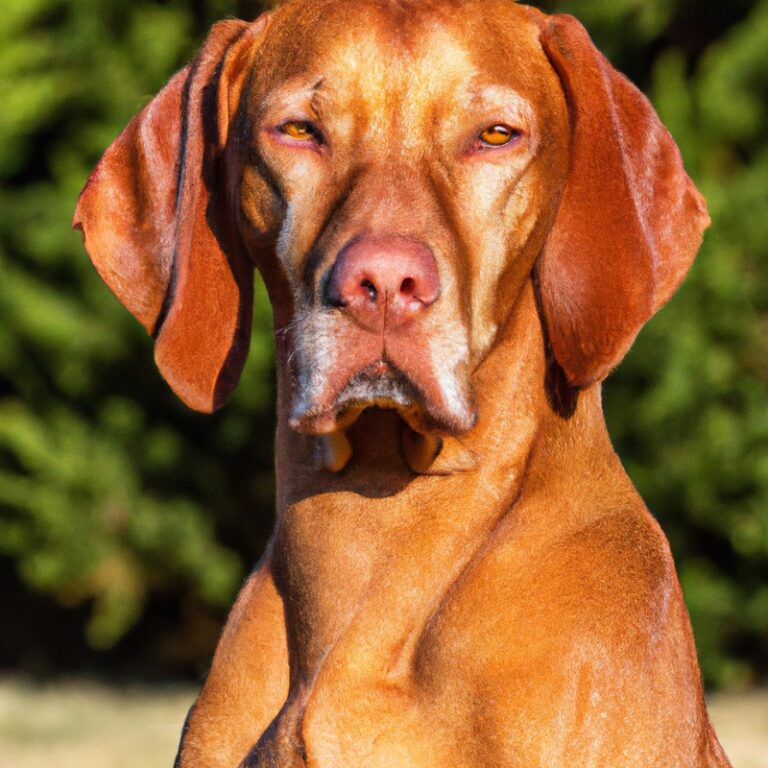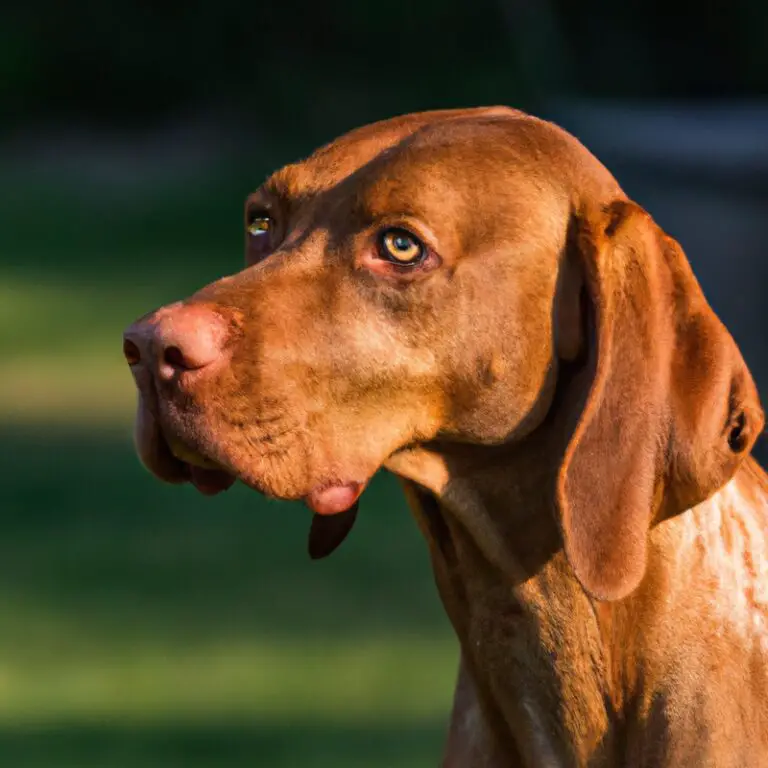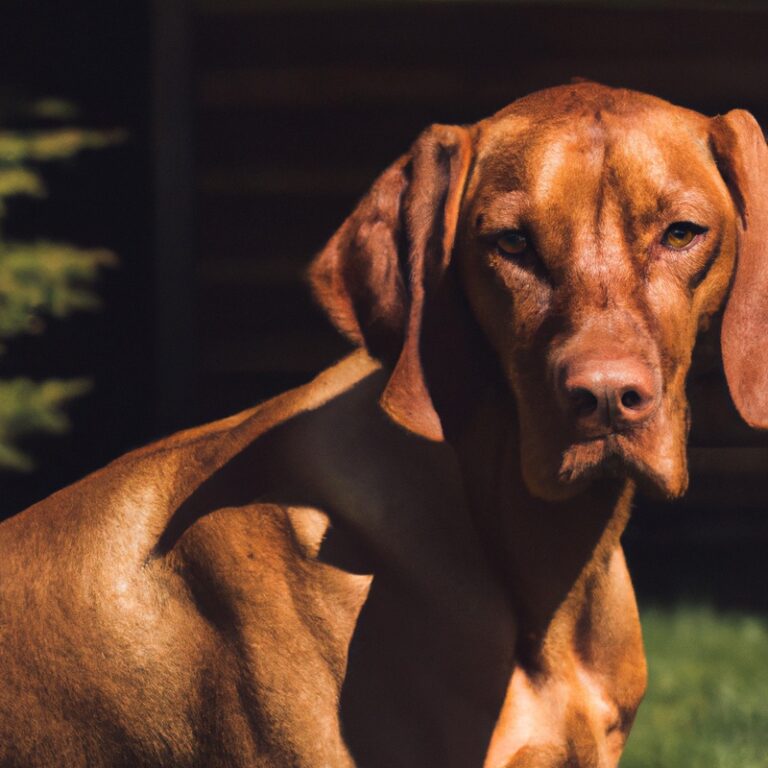How Do I Address Vizsla’s Possessiveness Over Toys And Playthings?
Key Takeaways:
- Understand that possessiveness over toys is a common trait in Vizslas.
- Establish clear boundaries and enforce consistent rules to address possessiveness.
- Use positive reinforcement techniques to encourage sharing and exchange of toys.
- Seek professional help if possessiveness becomes aggressive or unmanageable.
Are you tired of fighting with your Vizsla over toys?
Does your furry friend become possessive and aggressive when it comes to playthings?
Well, you’re not alone.
Many Vizsla owners struggle with their dogs’ possessiveness, but don’t worry, I’ve got you covered.
As a dog behavior expert, I’ve seen it all and I’m here to help.
In this article, I’ll guide you through understanding why Vizslas are prone to possessiveness, recognizing the signs, and most importantly, provide you with effective strategies to address this behavior.
So, let’s dive in and reclaim those toys for peaceful playtime!
| Issue | Possible Solution | Effectiveness |
|---|---|---|
| 1. Toy Guarding Behavior | Positive reinforcement training | ✅✅✅ |
| Trade-up strategy | ✅✅✅ | |
| Working with a professional trainer | ✅✅✅ | |
| 2. Resource Control | Teach “drop it” command | ✅✅ |
| Rotate toys | ✅✅✅ | |
| Manage environment | ✅✅ | |
| 3. Mental and Physical Stimulation | Engage in interactive play | ✅✅✅ |
| Puzzle toys and games | ✅✅✅ | |
| Regular exercise regimen | ✅✅✅ |
Understanding Vizsla’s Possessiveness
What is possessiveness in dogs?
Possessiveness in dogs refers to their strong attachment and desire to control certain objects, people, or spaces. It can manifest in various forms, such as resource guarding, guarding toys or food, or becoming overly protective of their owners.
This behavior stems from a natural instinct to protect what they perceive as valuable or important to them.
Possessiveness can be addressed through training, providing clear boundaries, and teaching the dog to share and relinquish objects. Patience, consistency, and positive reinforcement are key when addressing possessiveness in dogs.
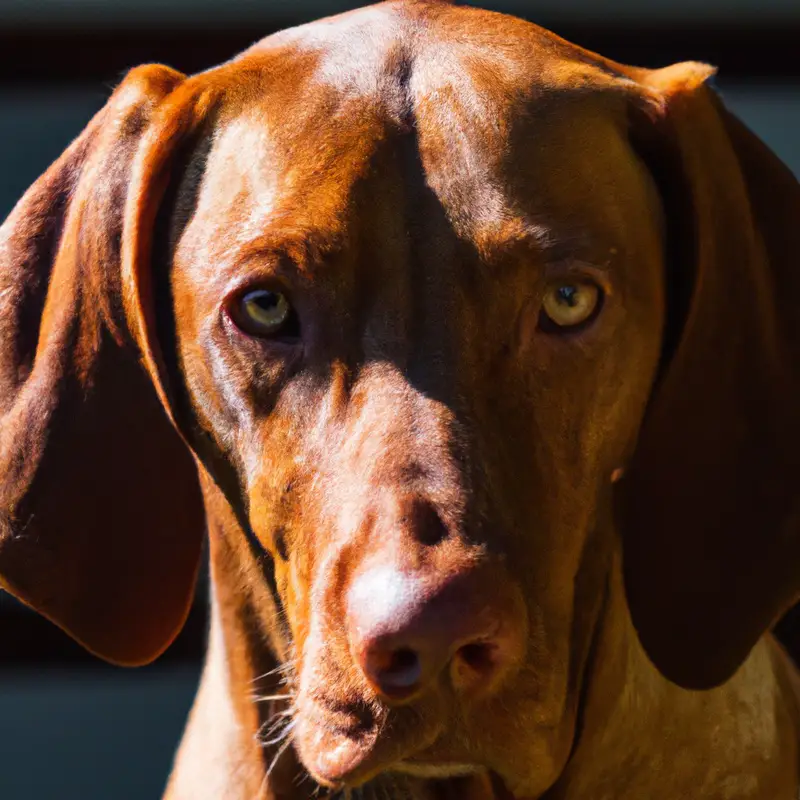
Why are Vizslas prone to possessiveness?
Vizslas are prone to possessiveness due to their strong loyalty and protective instincts.
These dogs have a deep bond with their owners and view their toys and playthings as valuable resources.
They may exhibit possessive behavior to safeguard what they consider their own.
Early socialization and positive reinforcement training can help address this issue, ensuring a happy and well-adjusted Vizsla.
Additionally, setting boundaries and providing appropriate outlets for their energy can help redirect their possessive tendencies.
Signs of possessiveness in Vizslas
Vizslas can show possessiveness over toys and playthings. Signs of possessiveness in Vizslas include growling or snapping when someone gets too close to their toys, guarding toys from other dogs or humans, and refusing to share or give up their toys.
They may also exhibit resource guarding behavior by hiding their toys or displaying anxious or aggressive behavior when someone tries to take them away.
It’s important to address possessiveness in Vizslas to prevent any potential issues.
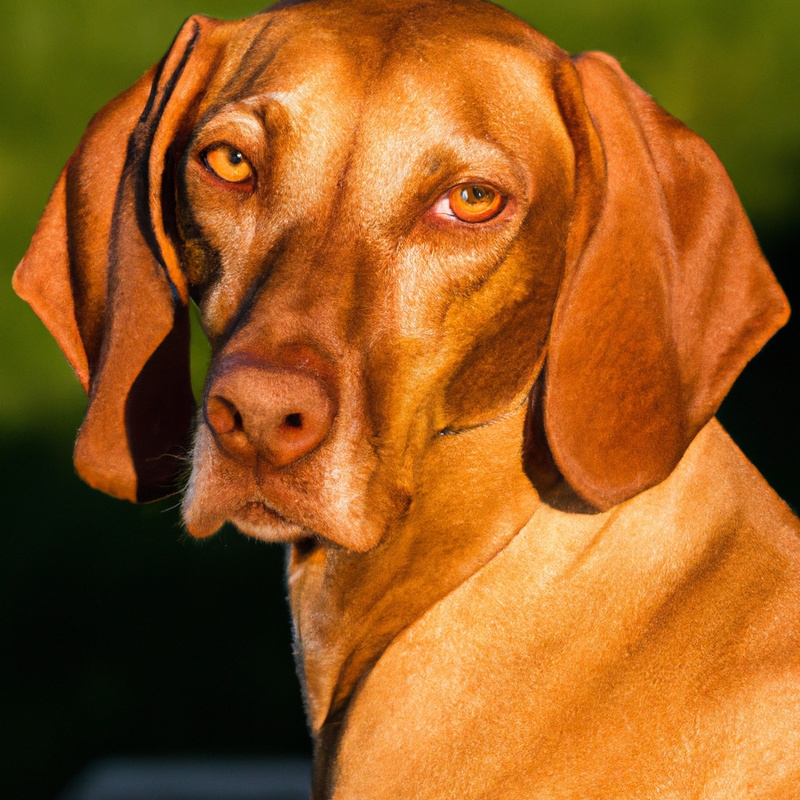
Addressing Vizsla’s Possessiveness
Rule out underlying health issues
To address your Vizsla’s possessiveness over toys and playthings, it’s important to rule out any underlying health issues. Start by taking your pup to the veterinarian for a thorough examination.
They can check for any physical conditions or discomfort that may be contributing to the possessive behavior.
Remember, addressing health issues is an important step in understanding and resolving behavioral problems in dogs.
Provide proper exercise and mental stimulation
To address your Vizsla’s possessiveness over toys and playthings, it’s essential to provide them with proper exercise and mental stimulation.
Make sure you engage them in regular physical activities like running, playing fetch, or going for long walks.
Mental stimulation can be achieved through puzzle toys, obedience training, or participating in dog sports.
Providing a variety of both physical and mental activities will help channel your Vizsla’s energy and reduce possessiveness tendencies.
Teach appropriate toy-sharing behavior through training
To teach your Vizsla appropriate toy-sharing behavior, start by setting clear boundaries and rules.
- Establish a command, such as “share” or “drop it,” that signals your dog to release the toy.
- Use positive reinforcement, like treats or praise, when your Vizsla obeys the command.
- Gradually increase the duration your dog must share the toy before receiving the reward.
- Practice the command in various settings and with different toys to generalize the behavior.
- Avoid scolding or punishing your Vizsla for possessive behavior, as it can create fear or aggression. Positive reinforcement and consistency are key to teaching appropriate toy-sharing behavior.
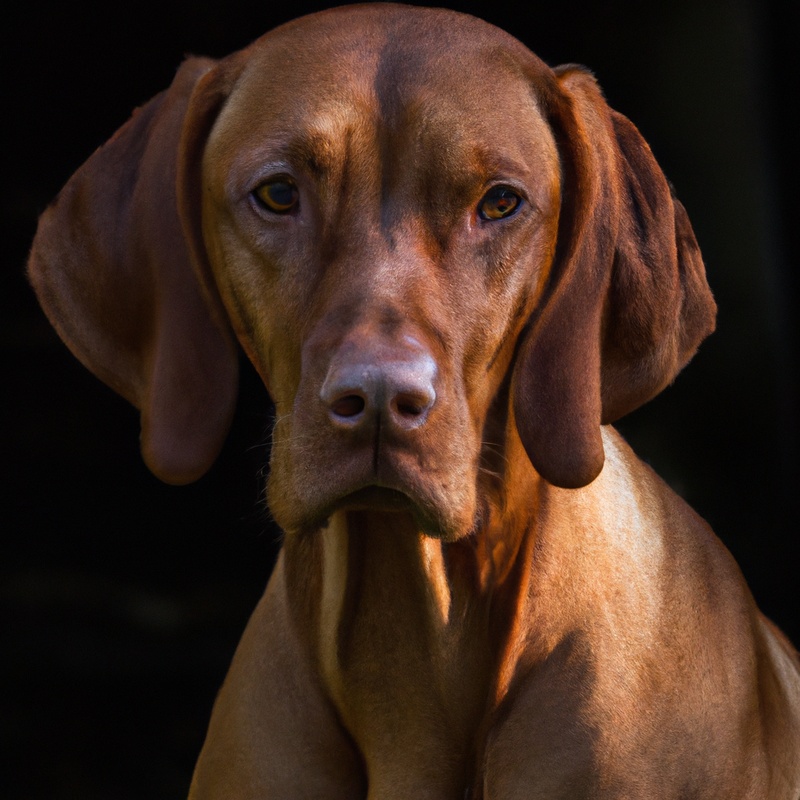
Use positive reinforcement techniques
Positive reinforcement techniques are highly effective when addressing a Vizsla’s possessiveness over toys and playthings. Here are a few techniques to try:
- Reward good behavior: Whenever your Vizsla shows non-possessive behavior around their toys, praise and reward them with treats or playtime.
- Trade-up method: Encourage your Vizsla to give up a toy by offering them a more enticing or valuable item in return. This teaches them that letting go doesn’t mean losing out.
- Gradual desensitization: Gradually expose your Vizsla to situations where they might typically exhibit possessiveness, starting with less valuable items. Reward them for remaining calm and non-possessive during these interactions.
Remember, consistency and patience are key. By using positive reinforcement techniques, you can help your Vizsla develop a healthier and less possessive attitude towards toys and playthings.
Gradually desensitize and counter-condition
To address your Vizsla’s possessiveness over toys and playthings, gradually desensitizing and counter-conditioning can be effective. Start by introducing new toys and playthings in a controlled environment, and reward your Vizsla for calm and non-possessive behavior.
Gradually increase their exposure to situations that trigger possessiveness, while reinforcing positive behavior.
This process helps your Vizsla associate toys and playthings with positive experiences, ultimately reducing possessiveness. Be patient and consistent in implementing these techniques to achieve successful results.
Seek professional help if necessary
If you’ve tried various approaches and your Vizsla’s possessiveness over toys and playthings is still causing problems, don’t hesitate to seek professional help.
A certified dog trainer or animal behaviorist can provide expert guidance tailored to your specific situation.
They can assess the underlying causes of your Vizsla’s possessiveness and develop a customized plan to address it effectively.
Remember, professional help can be a valuable resource when it comes to resolving behavioral issues with your beloved pet.
Preventing Possessiveness in Vizslas
Early socialization and exposure to different environments
Early socialization and exposure to different environments is essential for Vizslas. It helps them develop into well-rounded and confident dogs.
The more positive experiences they have as puppies, the more adaptable they’ll be as adults.
Introduce them to various people, animals, sights, and sounds. Take them to different places and let them explore.
This will help prevent possessiveness over toys and playthings by teaching them that new experiences are a normal part of life.
Buy toys that encourage sharing and interactive play
Buy toys that promote sharing and interactive play to address your Vizsla’s possessiveness. Look for toys that can be enjoyed by multiple dogs, encouraging them to play together and share.
Interactive toys, such as puzzle toys or treat-dispensing toys, can help divert your dog’s attention and redirect their possessive behavior.
Additionally, rotate the toys regularly to keep them interesting and prevent possessiveness over specific items.
Rotate toys regularly
One effective way to address possessiveness in Vizslas is to rotate their toys regularly.
This helps prevent them from becoming overly attached to a specific toy.
By swapping out their toys every few days, you can keep their interest and prevent possessive behavior.
It also allows them to experience variety and prevents them from fixating on a single item.
Remember, a variety of toys can keep your Vizsla happy and prevent possessiveness.
Establish a consistent routine and rules
To address possessiveness in Vizslas, establishing a consistent routine and rules is key.
Make sure your Vizsla knows what to expect by sticking to a regular schedule for playtime, feeding, and exercise.
Set clear boundaries and consistently enforce them.
Encourage sharing and trading toys to prevent possessive behavior from developing.
Regular training sessions can also reinforce obedience and help your Vizsla understand the rules.
Consistency and structure are essential in promoting a well-rounded and well-behaved Vizsla.
Avoid reinforcing possessive behavior
If your Vizsla exhibits possessive behaviors, it’s important to avoid reinforcing those tendencies.
Instead, encourage sharing and cooperation during playtime.
Here are some tips to help you avoid reinforcing possessive behavior in your Vizsla:
- Set clear boundaries: Establish rules around sharing toys and playthings, and consistently enforce them.
- Rotate toys: Regularly switch out toys to prevent your Vizsla from becoming overly attached to one particular item.
- Use positive reinforcement: Reward your Vizsla for letting go of toys or engaging in cooperative play with treats or praise.
- Encourage sharing: Teach your Vizsla to share by offering two toys at once and encouraging them to play with both.
- Practice trade-offs: Teach your Vizsla to exchange one toy for another through gentle exchanges and rewarding them for letting go.
Remember, consistency is key when addressing possessive behavior in Vizslas.
With patience and positive reinforcement, you can help your Vizsla develop healthier play habits.
Monitor and manage playtime
When it comes to addressing possessiveness in Vizslas during playtime, monitoring and managing their interactions is key.
Here are a few tips to help you navigate this situation:
- Supervise playtime closely to ensure everyone is playing safely and fairly.
- Introduce toys gradually and rotate them, so your Vizsla doesn’t become too possessive over a single item.
- Teach your Vizsla “drop it” or “leave it” commands to encourage sharing and prevent possessiveness.
- If you notice possessive behavior, calmly redirect their attention to another activity or reward them for sharing.
- Involve other family members or friends in playtime, so your Vizsla learns to share and interact with others.
Frequently Asked Questions
Can possessiveness over toys be a sign of aggression?
Possessiveness over toys can indeed be a sign of aggression in dogs.
When a dog becomes overly protective or territorial towards its toys, it may exhibit aggressive behaviors such as growling, snapping, or even biting when someone tries to approach the toy.
This possessiveness indicates a lack of trust or resource guarding, both of which can be associated with aggression.
It’s important to address this behavior early on to prevent any potential harm and ensure a safe environment for everyone involved.
How long does it take to address possessiveness in Vizslas?
Addressing possessiveness in Vizslas can vary in duration depending on the dog and the specific circumstances. It is important to be patient and persistent in your efforts.
The timeline for improvement can range from a few weeks to several months.
Consistency in training, providing appropriate outlets for their energy, and using positive reinforcement methods will help expedite the process. Remember to seek professional guidance if needed, as every Vizsla is unique.
Is it possible to completely eliminate possessiveness in Vizslas?
Completely eliminating possessiveness in Vizslas is challenging but not impossible.
It requires consistent training, positive reinforcement, and establishing clear boundaries.
Working with a professional dog trainer can be helpful.
Teaching your Vizsla to share toys and providing plenty of mental and physical stimulation can also reduce possessive behavior.
Remember, each dog is unique, so patience and persistence are key.
What should I do if my Vizsla becomes possessive over people or food?
If your Vizsla becomes possessive over people or food, it’s important to address this behavior promptly. Here are a few steps you can take:
- Set clear boundaries and establish yourself as the leader. Make it clear that you decide who gets attention or food.
- Teach your Vizsla basic obedience commands, such as “sit” and “stay.” These commands can help redirect their focus and reinforce your position as the one in control.
- Gradually introduce your Vizsla to new people and situations. Socialization can help reduce possessiveness and make them more comfortable around others.
- Use positive reinforcement training techniques. Reward your Vizsla with treats and praise when they exhibit calm and non-possessive behavior.
- Seek professional help if the possessiveness persists or escalates. A professional dog trainer or behaviorist can provide guidance tailored to your specific situation.
Remember, consistency and patience are key when addressing possessiveness in Vizslas. With time and proper training, you can help them overcome this behavior.
Are there any specific toys or training methods that work best for Vizslas?
There are certain toys and training methods that tend to work well for Vizslas.
Toys that can keep them mentally stimulated and physically active, such as puzzle toys or interactive treat-dispensing toys, are great choices.
As for training methods, positive reinforcement techniques, like using treats or praise to reward good behavior, are effective.
Additionally, Vizslas are known for their high energy levels, so providing them with plenty of exercise and mental stimulation is key.
Final Verdict
Addressing a Vizsla’s possessiveness over toys and playthings requires a comprehensive approach that takes into account their breed tendencies and individual needs.
By ruling out underlying health issues, providing proper exercise and mental stimulation, implementing training techniques, and seeking professional help when necessary, you can effectively address possessiveness in Vizslas.
Prevention is key, through early socialization, the use of toys that encourage sharing, and establishing consistent routines.
While complete elimination of possessiveness may not always be possible, with patience, consistency, and positive reinforcement, you can significantly reduce and manage this behavior.
Trust in the process, and remember that each Vizsla is unique and may require tailored strategies.



